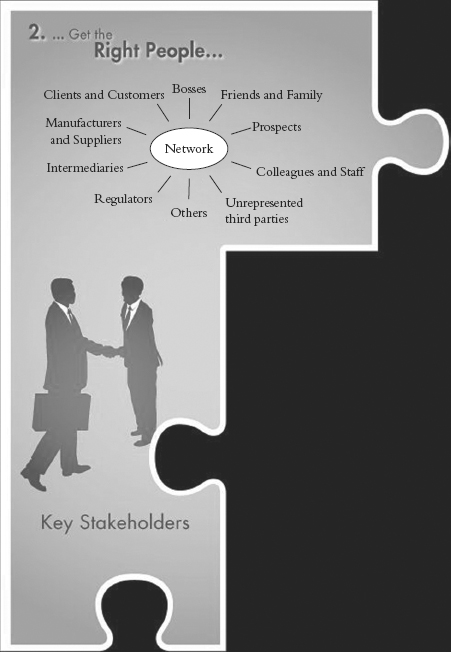Chapter 3
How to Get the Right People to Dialogue on the Right Issues
In [dialogue] comes the realization that we are not our point of view, that the shared identity we have had is not what we thought, and that we can together see more than we might have on our own.
—William Isaacs1
Stakeholders
In every dialogue it is normal to have two or more stakeholders. By stakeholder I refer to people who have a stake in the dialogue because (a) they will be responsible for the outcome of the dialogue, (b) they will be affected directly or indirectly by the outcome of the dialogue, or (c) their exclusion from the dialogue will cause those who are involved to arrive at a less than optimal outcome.

Stakeholders, either as individuals or as representatives of stakeholder groups, bring their respective issues or perspectives on common issues to the dialogue. One of the most common causes of suboptimal outcomes is the exclusion (through oversight or intent) of one or more of the stakeholders. Exclusion of stakeholders is like preparing a toxic drink for others and then downing it yourself because what you are preparing is problems for yourself for later.
Problems can never be solved with the same mind that created them.
—Albert Einstein2
Excluding Stakeholders through Oversight
Sometimes leaders overlook including people in their dialogues because they don’t think or realize that some people ...

